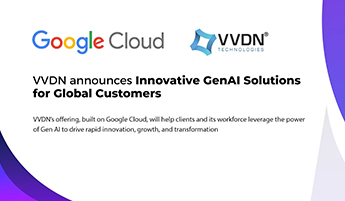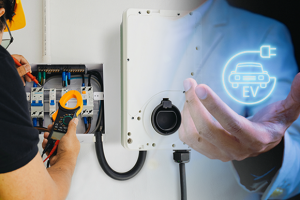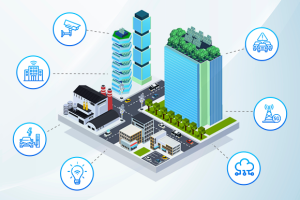The Android ecosystem continues to dominate the mobile and embedded device landscape, powering everything from smartphones and smart TVs to automotive systems, IoT devices and more. As businesses aim to develop next-generation Android devices, the challenge extends beyond beautiful user interfaces or innovative applications, it lies in delivering a seamless, high-performance experience at the system level.
This is where a holistic approach to Android system-level development and customization becomes essential. By addressing every layer of the Android stack—from hardware interfaces to software frameworks—companies can ensure optimal device performance, compliance with industry standards and a standout user experience in a competitive market.
In this blog, we explore the complexities of Android system-level development—including hardware integration, kernel and middleware customization and security compliance—and how VVDN brings full-stack Android development expertise to the table.
Table of Contents
The Complexity of Android System-Level Development
While the Android operating system offers a rich set of features, creating a high-quality, customized Android device requires much more than just using the stock Android platform. A device’s performance, stability and overall user experience are significantly influenced by how well the underlying system is developed and integrated. System-level development covers several critical aspects, including hardware integration, kernel, middleware and security features-all of which must work seamlessly to deliver optimal functionality and performance.
Below are the key components involved in system-level development:
1. Hardware Integration and HAL (Hardware Abstraction Layer)
The Hardware Abstraction Layer (HAL) serves as the bridge between the Android operating system and the device’s hardware. Customizing and optimizing HAL enables the Android OS to interface with a wide variety of hardware components such as sensors, cameras and displays. Proper integration of these components is essential to device performance, as it directly impacts features like power management, sensor accuracy and overall device responsiveness.
Developers need to ensure that each piece of hardware is correctly abstracted so that the Android OS can interact with it efficiently. This requires deep knowledge of both hardware and software to create custom drivers, configure device resources and achieve maximum performance with minimal power consumption.
2. Kernel Customization and Optimization
The Android kernel acts as the foundational layer of the operating system, managing interactions between software and hardware components such as the CPU, memory, and storage. Through kernel customization, developers can enhance system performance, extend battery life and implement device-specific functionalities.
Whether the objective is to boost processing speed, strengthen system security or increase power efficiency, kernel optimization ensures smooth and reliable performance across a range of use cases—from basic web browsing to resource-heavy applications like gaming or media playback.
3. Middleware and System Frameworks
Middleware refers to the software layers that provide essential services to apps and the broader system. Custom middleware development allows companies to tailor the Android framework to suit their specific device requirements. This could include custom APIs, network protocols or specialized services like camera frameworks or audio processing.
By developing customized middleware, businesses can ensure that their devices stand out with unique features, whether it’s a specialized user interface, a custom service for hardware management, or specific capabilities for IoT or automotive systems.
4. Security and Compliance
In today’s world, security is a top priority for every device, especially Android-powered devices that handle sensitive user data. Customizing security layers at the system level, such as SELinux configuration, encryption and secure boot, ensures that the device remains secure and protected from threats.
Additionally, achieving GMS (Google Mobile Services) certification is crucial for Android devices, granting access to Google’s apps and services. GMS compliance ensures trust, usability, and a consistent user experience in global markets.
5. Quality Assurance and Testing
System-level development is only as good as the quality assurance process behind it. Extensive testing is required to ensure that the device performs as expected across a wide range of scenarios. This includes functional testing, regression testing, stress testing, and performance benchmarking to ensure the device can handle real-world usage without crashes, slowdowns or other issues.
Customizing the testing process to match the specific features of the device further enhances the development process, ensuring that every aspect of the device is thoroughly tested before launch.
6. Faster Time-to-Market
A holistic, system-level development approach allows for faster time-to-market because it ensures that all components of the device are developed and integrated simultaneously. By working on the hardware, software, and testing in parallel, OEMs can streamline their development process and get Android products into the market faster.
The Future of Android Device Development
The Android ecosystem continues to evolve, with new hardware, new capabilities, and increasingly sophisticated software features. As the demand for more customized, high-performance devices increases, companies will need to adopt a more holistic approach to Android development to remain competitive.
Whether you’re creating the next flagship smartphone, a smart home device, or a ruggedized industrial IoT solution, ensuring that all layers of the Android system are optimized for your device’s specific needs is crucial. From hardware integration and kernel optimization to customized middleware and robust security measures, a holistic system-level approach ensures that your Android device will excel in both functionality and performance.
Conclusion
Building next-gen Android devices requires more than just developing applications and user interfaces. A successful device hinges on seamless integration and customization across the system stack—starting from hardware interfaces to software frameworks and beyond. By adopting a holistic approach to Android development, companies can create powerful, reliable, and innovative devices that meet user expectations and stand out in a competitive market.
Whether you’re an OEM, a startup, or a tech company aiming to bring new Android-powered products to market, working with experienced developers who understand the nuances of system-level customization can make all the difference in delivering a truly exceptional device.
VVDN’s Android team has extensive experience across all layers of the Android stack, including HAL (Hardware Abstraction Layer) bring-up, kernel and driver development, middleware integration, SELinux configuration, GMS certification support, and system performance optimization. With this end-to-end capability, VVDN helps OEMs, product companies and startups accelerate their Android product development and achieve high-quality outcomes.
To know more about VVDN’s Android Expertise, please visit : https://www.vvdntech.com/en-us/internet-of-things/android-development-services

















































